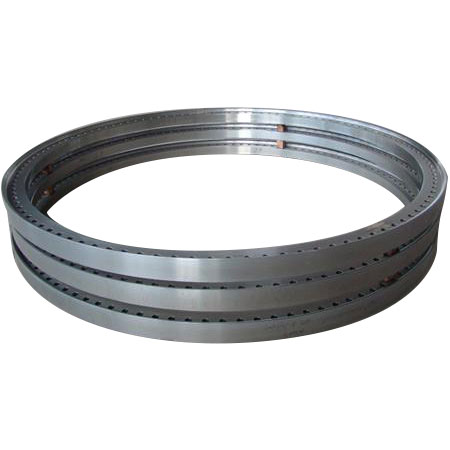The Primary Applications of Stainless Steel Wind Power Flanges in Wind Turbine Systems
2024-07-04
Wind turbines have become a cornerstone of renewable energy, providing a sustainable and efficient way to generate electricity. Central to the reliability and performance of these turbines are various components that ensure their structural integrity and functionality. Among these, stainless steel wind power flanges play a crucial role. This blog explores the primary applications of stainless steel wind power flanges in wind turbine systems.
1. Structural Integrity and Support
Stainless steel wind power flanges are essential for maintaining the structural integrity of wind turbines. These flanges are used to connect different sections of the turbine tower, providing a strong and stable foundation. The high strength and durability of stainless steel make it an ideal material for withstanding the immense forces exerted by wind and the turbine's own operational stresses.
2. Rotor Hub Connections
The rotor hub is a critical component of a wind turbine, connecting the blades to the main shaft. Stainless steel wind power flanges are used in the rotor hub to ensure a secure and stable connection. This application is vital as it allows the transfer of mechanical energy from the rotating blades to the generator. The use of stainless steel ensures that the connection remains robust and resistant to fatigue over the turbine's lifespan.
3. Nacelle Assembly
The nacelle houses the essential components of a wind turbine, including the generator, gearbox, and control systems. Stainless steel wind power flanges are used in the assembly of the nacelle to connect these components securely. The flanges ensure that the nacelle can withstand the dynamic loads and vibrations generated during operation, protecting the sensitive equipment inside.
4. Blade Connections
Wind turbine blades are subjected to significant aerodynamic forces and must be securely attached to the rotor hub. Stainless steel wind power flanges are used to connect the blades to the hub, ensuring that they remain firmly in place. The use of stainless steel provides the necessary strength and corrosion resistance to handle the harsh environmental conditions that wind turbines often face.
5. Tower Sections
Wind turbine towers are constructed in sections, and stainless steel wind power flanges are used to connect these sections together. This modular construction allows for easier transportation and assembly of the turbines. The flanges provide a secure and stable connection, ensuring that the tower can support the weight of the nacelle and rotor while withstanding external forces like wind and weather conditions.
6. Maintenance and Inspection Points
Stainless steel wind power flanges also facilitate maintenance and inspection of wind turbines. They allow for easy disassembly and reassembly of turbine components, making it simpler to conduct regular maintenance checks and repairs. This application is crucial for ensuring the long-term reliability and efficiency of wind turbines.
Conclusion
Stainless steel wind power flanges are indispensable components in the construction and operation of wind turbines. Their applications range from ensuring structural integrity and supporting critical connections to facilitating maintenance and enhancing safety. The choice of stainless steel as a material offers the necessary strength, durability, and corrosion resistance required for the demanding conditions in which wind turbines operate. As the renewable energy sector continues to grow, the role of stainless steel wind power flanges will remain vital in ensuring the efficiency and reliability of wind turbine systems.



